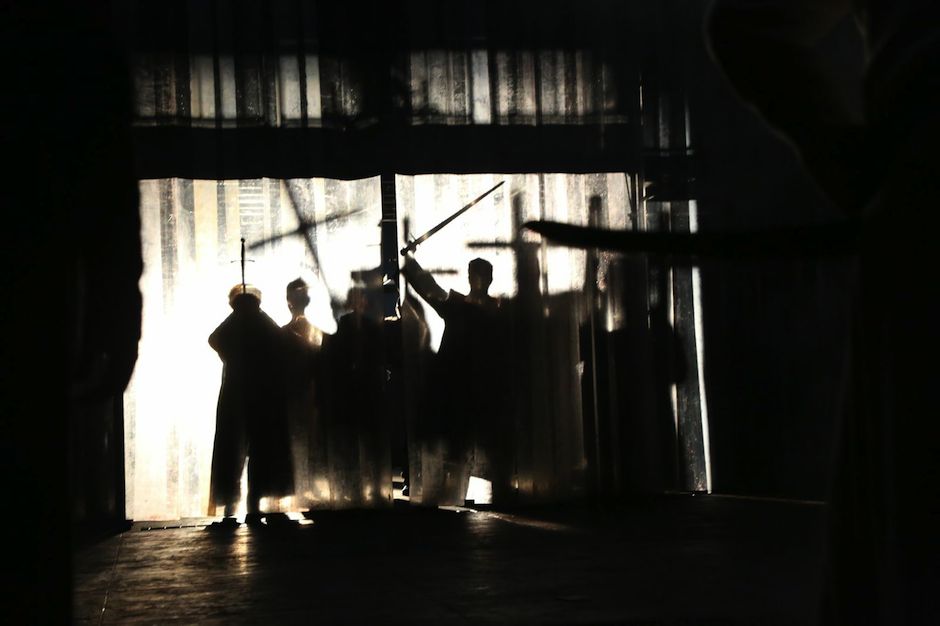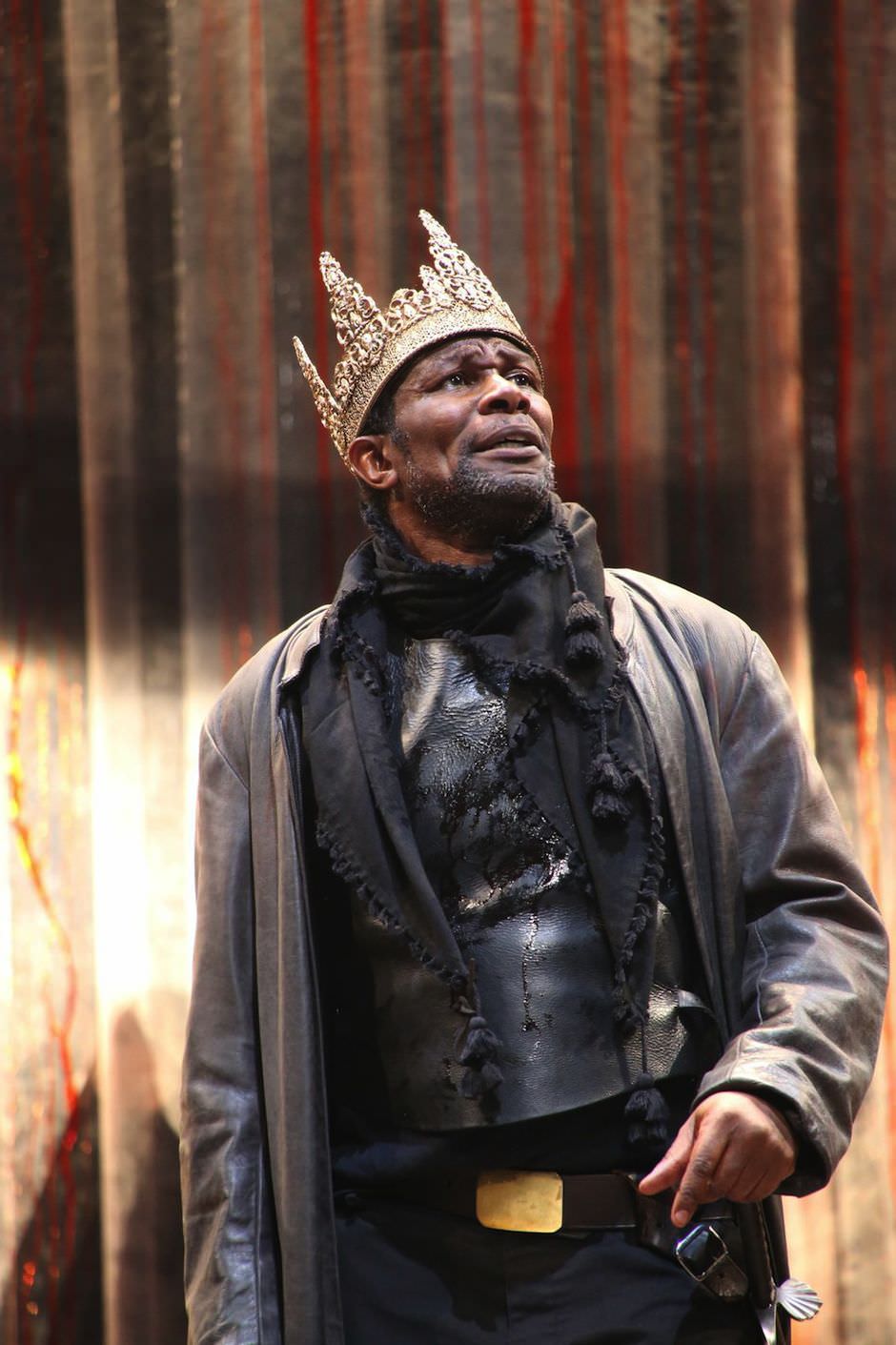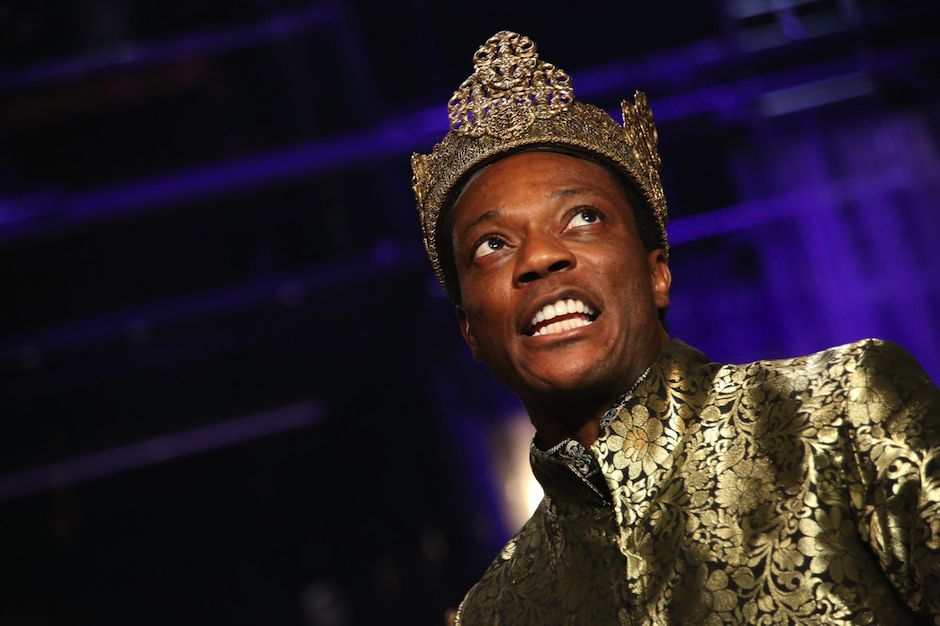The career of Christopher Marlowe’s world-conquering Tamburlaine progresses like a river in flood, rising steadily and irresistibly and spilling over into actions of spectacular destruction, sparing nothing that stands in opposition. The force of that river is embodied in language, whether spoken by the Scythian conqueror or by those he conquers. Marlowe’s “mighty line” of full-throttle iambic pentameter was a triumph of streamlining. In Tamburlaine the Great (1587), his first major play, the insistent thudding pulse and great mouthfuls of sound—“Black is the beauty of the brightest day” or “Over my zenith hang a blazing star”—turn dramatic poetry into a species of stripped-down arena rock. Here was a verbal music tailored to the expression of hyperbolic desires and hyperbolic deeds. Reading Tamburlaine it is not hard to imagine how, with the help of what must have been quite a performance by the legendary actor Edward Alleyn, it swept away all competition on the stages of London in the 1580s. (Capitalizing on its enormous popular success, Marlowe wrote a continuation in 1588.) It has often been, however, hard to imagine how that power might be resurrected on a contemporary stage.
With the indispensable presence of John Douglas Thompson taking charge of the title role, Theatre for a New Audience (TFANA) has managed just that at the Polonsky Shakespeare Center in Brooklyn. The production, directed by Michael Boyd, is the first in New York since 1956, when Anthony Quayle starred on Broadway in Tyrone Guthrie’s poorly received version. (It is not clear when, if ever, the play was done in New York before 1956.) Boyd, in order to present both parts of Tamburlaine in a single evening, has trimmed the work drastically—the show runs about three and a half hours—but has done remarkably little injury to its structure and proportions, retaining its religious and geopolitical intricacies, the failed alliances of Christians and Muslims, the maneuvering of Persian and Turkish and Egyptian and European interests struggling to fend off the conqueror’s threat. He has also managed to express the ways in which the first and second parts of Tamburlaine are distinctly different. The first ends in the exhilaration of victory, as “Tamburlaine takes truce with all the world”; the second works increasingly twisty and disturbing variations on the theme of “the Scourge of God and terror of the world,” plunging ahead from one cruel and annihilating scene to another until, with the hero’s death, the play itself seems to be sucked up into “the wrath and tyranny of Death.” It is not a work to be approached by half measures.
The first question with regard to performing Tamburlaine might be why do it at all. To revive this play is a bit like opening the door to some of those demons summoned up by Marlowe’s Doctor Faustus. The energies unleashed are destructive and uncontainable—or, if that effect is not produced, there is not much point in doing the thing in the first place. There is no way to have an easy relation to this authentically bloodthirsty play, and even playing some bits for comedy, as this production does here and there, doesn’t palliate the unnervingly seductive force of Tamburlaine’s will to lay everything low before him. That force is seductive not simply by being swathed in poetic language but because Tamburlaine incarnates the fiery essence of poetry itself.
He does not merely use language, he is language, dominating the world as much by words as deeds, peremptorily and successfully wooing the abducted Egyptian princess Zenocrate and winning the loyalty of the Persian general Theridamas who has been sent to oppose him. The world he conquers with his army he has first invoked in a delirium of place-names, an incantatory cataloguing of exotic cities and countries, mountains and rivers, a geographic ecstasy that envisions a progression “from Persepolis to Mexico, / And thence unto the Straits of Jubalter” and vows that “when holy Fates / Shall ’stablish me in strong Egyptia, / We mean to travel to th’antarctic pole, / Conquering the people underneath our feet.”
“You see, my lord, what working words he hath,” Theridamas notes to the Persian king, “But, when you see his actions top his speech, / Your speech will stay.” Tamburlaine’s atrocities, which become more elaborate as the play goes on, are no more than an extension of his words: he fulfills what he has promised, just as his rise to power is itself the fulfillment of what was already written in the stars. Even when his actions appear outrageous, as when he stabs his son to death for having balked at fighting in battle, he moves calmly and surely, borne up by the intoxication of astrological election. He cannot lose because the universe is on his side and he knows it: “I hold the Fates bound fast in iron chains, / And with my hand turn Fortune’s Wheel about.” The modern equivalent would be less the self-congratulating arrogance of a go-getting entrepreneur or gangster, and more the self-entranced certitude of Hitler addressing the Reichstag in 1939: “I go the way that Providence dictates with the assurance of a sleepwalker.” But to cast Tamburlaine in the image of the power-mad dictator, one would have to get around the fact that Marlowe holds him up not to be condemned but to be admired; wondered at, as a prodigy; thrilled by, as a wish-fulfilling destroyer of effete kings and hypocritical politicians, the wish-fulfillment compounded by his being a lowborn bandit who “came up of nothing.”
Advertisement
There are much darker thrills, of course, an inventory of them that licensed the Elizabethan audience to sup full with horrors: virgins impaled on lances, enemies starved and taunted, confined in a cage or fitted out like horses to pull a war chariot, royal concubines distributed among the soldiery for mass rape, a governor hoisted up on a wall for target practice, the whole population of a city massacred and flung into the surrounding river until the waters overflow their banks. To read the text is to go back and forth between Marlowe’s poetic arias, continually vaulting from one gorgeous exaggeration to another, and such stage directions such as “She runs against the cage, and brains herself” or “He cuts his arm” or “The Governor of Babylon appears hanging in chains on the walls.”
To find equilibrium between poetry and violence is the challenge of any production. In this version an early warning comes with the swift and unfussy dispatching (not indicated in Marlowe’s text) of one of Zenocrate’s attendants, reluctant to join up with Tamburlaine; the amplified crack of his neck being broken, worthy of an old-style martial arts movie, elicited a rustle of slightly uncertain laughter. That early sense of involuntary complicity gradually gave way to a more appalled fascination. When a captive’s tongue was being sliced off and tossed onto the stage (another detail not spelled out by Marlowe), a woman to my left was visibly shocked; and by the play’s end a more somber take on the proceedings seemed to have won out over comfortable theatrical fun. This was achieved by the deftest possible shift of tone within scenes, moving from flagrantly anachronistic sight gags (a character thumbing on stage through the show’s playbill) and bits of byplay with first row spectators to grand guignol grotesque to sudden plummeting depths of horror—while still managing to keep in focus the sheer encompassing beauty of the language within which it all takes place.
Admittedly it is essentially impossible for a modern audience to relive anything like what Marlowe’s spectators experienced. What was a live and shocking event of spoken language, tremulous and volatile, has calcified into literature. A modern stage production must translate much of what that language originally accomplished by its own powers into expressive patterns of staging and design and gesture. The TFANA exploits the courtyard stage of the Polonsky to menacing effect, with armies advancing and retreating from all sides and bladed weapons brandished almost too close for comfort for those in the orchestra seats. The blood which is shed in a multitude of inventive ways, in blots or floods, welling up or gushing out or raining down, makes for an extended set of variations on the color red. The production is unremittingly swift and pointed, with eighteen actors doubling roles repeatedly—among other things, a way of underscoring the repetitiveness in the pattern of events—and with punctuation provided by the percussive gong-tones, shimmering or grinding as needed, of Arthur Solari’s musical score, played from a balcony above the stage to suggest some more ancient ritual theater.
Along with the actors, the production assumes a double role, functioning at once as play and commentary on the play—not a single imposed interpretation, but a constant kaleidoscopic shifting of possible subtexts, possible parallels. Different eras jostle each other almost imperceptibly in the rush of events: the Christian knights carry swords, the doomed virgins of Damascus wear burkas, the temporizing governor of Babylon a well-tailored business suit; Tamburlaine and his associates drift from ancient to modern in the ragtag fashion of warriors from the hills, their weaponry gradually becoming more modern. The actors add further layers to the text, filling in its gaps with, for example, the laughter, welcoming smiles, and generous body language by which Tamburlaine and his confederates communicate among themselves, the camaraderie of pirates high on plundering or of revolutionary comrades in the fervor of victory or of high school football players when they find themselves on the winning side.
Advertisement
The doubling of roles and the quick transitions between scenes emphasize the ensemble nature of the playing, but certain actors are especially notable. Merritt Janson as the well-born Zenocrate captures the enigma of her being at once prisoner and object of devotion; Saxon Palmer helps bind the play together in four separate roles (including the rulers of Persia, Hungary, and Babylon), each a model of political duplicity and temporizing; Chukwudi Iwuji as the caged Turkish emperor Bajazeth was a worthy counterpart of Tamburlaine in his doomed, enraged protests; and Patrice Johnson Chevannes made the most of the maddened final speech of Bajazeth’s wife Zabina, an extraordinary passage which in her hands became central.
John Douglas Thompson, dominating but not overpowering the rest of the cast, finds nuances in what is not the most nuanced of roles, achieving notes of sincere passion, paternal love, paternal wrath, intellectual energy, and even—briefly indeed—relaxed affection, without in any way mitigating the terrifying essence of Tamburlaine. He has created a unified person of the most extreme contradictions—inflexible, brilliant, ceaselessly curious, incapable of mercy, incapable of self-doubt or of any self-reflection at all, hooked on the vitality of his own bottomless cravings.
It all makes sense until it begins to assume its true deranged proportions in part two: following the death of his beloved Zenocrate, Tamburlaine becomes the figure of amour fou, preserving her body so that it can accompany him in all his future battles, while burning to the ground the town in which she died: “This cursed town will I consume with fire, / Because this place bereft me of my love; / The houses, burnt, will look as if they mourned.” Next he will be burning the Koran, defying its God to take vengeance on his blasphemy. (Unlike his historical model, Marlowe’s Tamburlaine is not Muslim.) In his dying moments in the last act—he is not slain, merely “distempered suddenly” after burning “the heaps of superstitious books”—he seeks with almost his last breath to extend his war to the ruling forces of the cosmos: “Come, let us match against the powers of heaven, / And set black streamers in the firmament, / To signify the slaughter of the gods.”
Tamburlaine was in the first place a history lesson, whatever its reliability: a synopsis for London theatergoers of earthshaking events not all that distant in place or time. The historic Tamerlane died at the beginning of the fifteenth century, after carving out an immense empire stretching from Turkey to India and embracing large swaths of Mesopotamia, Persia, and central Asia. An inevitable eerie accompaniment to a modern production is the sense of a war begun long ago that continues to unfold. The geographic names with which the text is dotted—Syria, Egypt, Turkey, Gaza, Arabia, the Red Sea—provide their own form of commentary without any directorial intervention. The history of the present moment becomes a co-author, adding its own expressive footnotes. As death closes in, Tamburlaine studies a map of the world, tracing his victories and measuring how far he fell short: “And shall I die, and this unconquered?” As he reels off the place names, the contemporary spectator is apt to feel that map itself closing in, as distant places and events—the burning of cities, the massacring of populations—begin to intrude on the theatrical space. Tamburlaine dies, but the play remains unresolved, like an open wound.
Tamburlaine is showing at Theatre for a New Audience through December 21, 2014.





